
Ornamental pear trees develop multiple trunks. These large branches are notorious for splitting and falling during storms. Photo courtesy Tom Tyler/Bartlett Tree Experts
Fresh from a meeting of 400 member of Garden Writers Association in Pittsburgh, I thought I’d share what I learned in a class, Recognizing At-Risk Trees by Bob Polomski, a professor of forestry and urban forestry at Clemson University.
“I created this seven-point check up list to teach tree owners how to examine their trees for defects that are likely to lead to failure and possibly cause injury or damage,” he said. In tree talk, failure means a tree or limb falls.
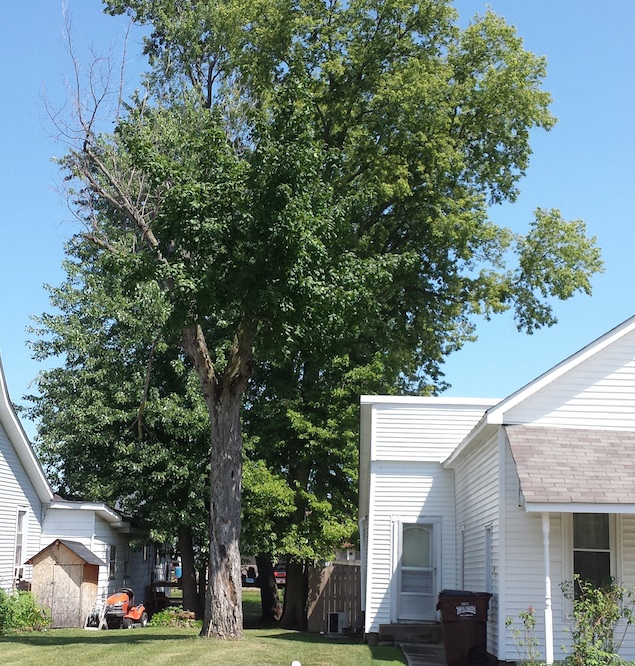
A silver maple with cracks and crevices threatens two houses. Photo courtesy Jud Scott/Vine and Branch
First, stand far enough away from your trees so you can look up into the canopies.
1. Dead or hanging branches larger than 2-inch diameter should be removed immediately to prevent them from falling and damage objects and people below.
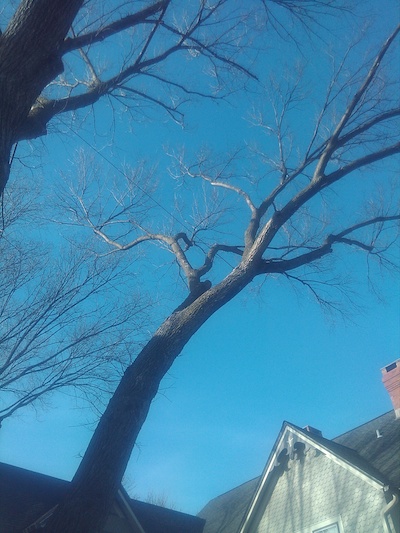
A tree limb threatens a home. Photo courtesy Tom Tyler/Bartlett Tree Experts
2. Is the tree leaning? “If you see exposed roots or a mound of soil near its base, the tree may be an imminent hazard that requires immediate action,” Polomski said.
Second, walk up to the tree and closely examine the branches and trunk.
3. Are there multiple trunks and leaders? Look for cracks or splits in branches that are co-dominant. Wishbone-like trunks of equal diameter may separate during wind and ice storms. Ornamental pears are prime examples of multiple trunks that split during storms.
4. Inspect where large branches meet the trunk. Look for cracks or splits. Remove the branches before a storm does, Polomski said.
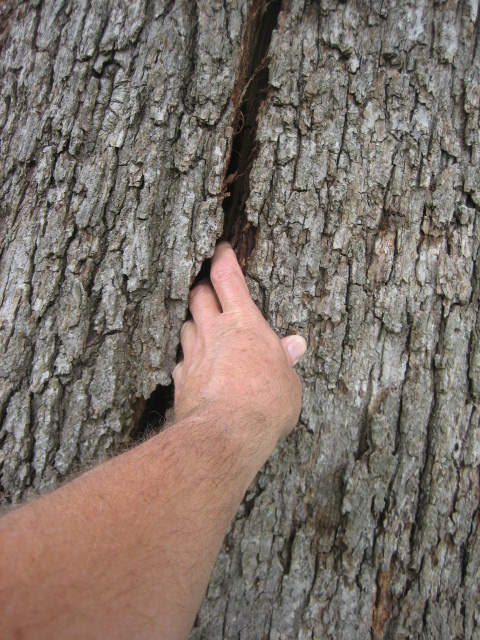
Deep cracks in the trunk indicate serious risks and should be check by a certified arborist. Photo courtesy Tom Tyler/Bartlett Tree Experts
5. Use a pencil or stick to measure the depth of cracks or splits. If the crack extends into the wood beyond the bark, call a certified arborist to inspect the tree.
6. Look for cavities, cankers, mushrooms and other malformations of the trunk. These indicate dead and decaying wood. Call a certified arborist to assess the condition and potential risk of the tree.
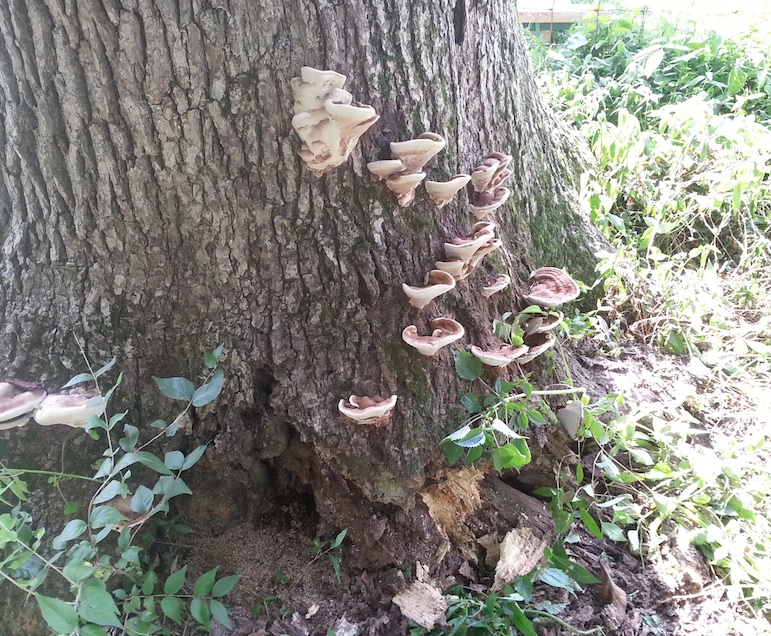
Be on the look out for cavities and the formation of fungus, which indicates dead or dying wood. Photo courtesy Jud Scott/Vine and Branch
Third, inspect the base of the tree.
7. Look for damage from rodents, trimmers or mowers at the base of the tree. Is there a mound of soil or cracked dirt near the main root? Do roots encircle the tree? Consult with a certified arborist to help solve the problem.
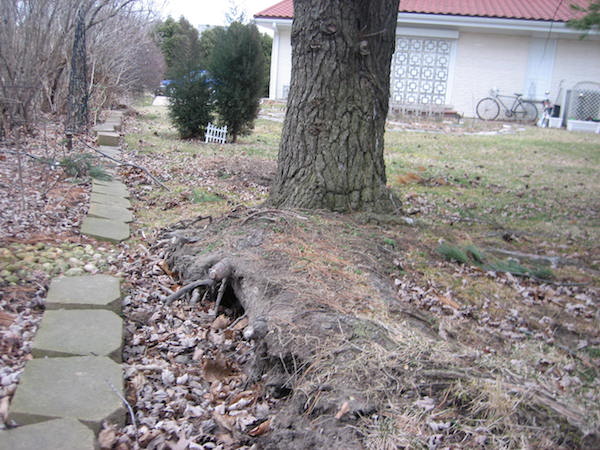
Landscape work severed the roots on one side of a pine tree, causing it to lift out of the ground and threaten the nearby house. Photo courtesy Tom Tyler/Bartlett Tree Experts
Why does this matter?
The last thing you want is for a tree to fall on your house, the neighbor’s or crash into cars on the street. A common argument for putting off tree work is the expense. It’s a balance, that’s for sure, but it’s likely more expensive to repair the house, replace the car, pay hospital bills or worse, than regular basic tree care.
Lastly, always work with a certified arborist.